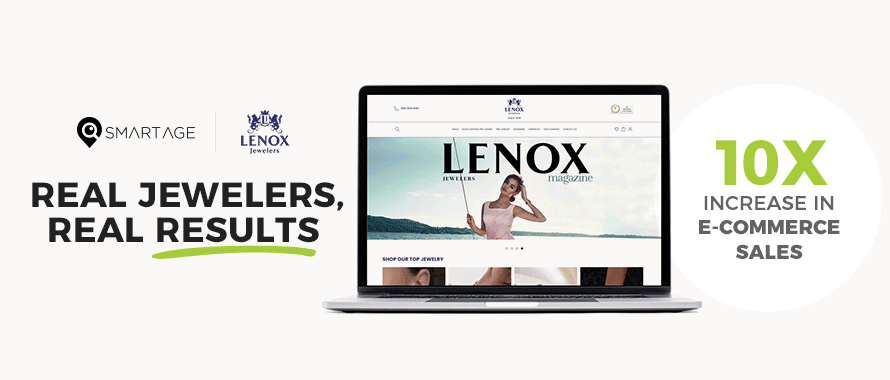Creating A Well-Planned Facebook Ads Strategy
August 31, 2018 (0 comments)

“Social media success” is more than posting.
Many times a store adopts a “post it and forget it” mentality. However, there is a lot of work to be done after you’ve made the post as well. Most of your success with Facebook will come from running paid ads, monitoring the campaigns, and adjusting.
Understanding Facebook’s visibility ratio
This is something I’ve talked about before, but I’d be doing a disservice by posting an article like this and leaving this info out for new readers.
If you have 3,000 followers, and make a Facebook post, that post will only be seen by 60 people.
A lot of people who use Facebook don’t realize Facebook’s algorithm. You see, Facebook only shows your posts to approximately 2% of the people who follow your page. This is how Facebook makes it’s money. They sell ads. But they also expect you to pay to “boost” your post, effectively extending the reach of the post and showing it to more people.
If you don’t pay extra to extend your posts, you might not be seeing results simply because too few people are seeing what you’re posting. Facebook being a “free” tool is a myth. It’s only free for average, every day consumers posting cat photos and random stuff on their walls. As a business owner, you must pay to play if you want a large number of people to see your posts. It’s completely worth it! But its not free.
Note: I actually do not recommend “boosting” your posts by clicking the big blue button next to your post. Boosted posts simple aren’t as effective as extending the post through your Ads Manager. Plus, through Ads Manager, you can fine tune your ads with more specificity.
Quality vs Frequency
Very few people will ever buy a piece of jewelry because you posted a cute picture of it on your Facebook page. The buyer’s “consideration” phase is way more complex than that. In reality, the buyer’s journey usually involves months of research and mental planning. A brand truly doesn’t reach it’s customer until the customer has been “touched” 7-10 times by the brand. This can be in the form of email, social media, etc.
If you’ve done much advertising across the length of your career, you likely understand this concept. Your customers need to see your store name/products multiple times. At the same time, they have a limited attention span.
Far too often, we try to reach our customers with really bad posts. A post describing how the jewelry was designed, or telling the story about the piece, will always do better than posting a picture of the jewelry and just saying “now available at our store”.
Many jewelers think they need to post something every day so people see their posts. This is unnecessary to a degree, since we’re going to be paying to extend the visibility of our best posts. The focus shouldn’t be on making sure to post something every day. The focus should be on creating great, worthwhile posts once or twice a week and distributing them intelligently across Facebooks.
Learning About Your Audience
Running ads won’t just allow more people to see your content. It means that you’ll be able to see what people are clicking on and engaging with. Facebook’s data is incredible. They’ll tell you exactly how your ads are performing and the demographics they’re performing with.
Start with a small budget - $10, $20, or whatever you can afford - to promote each of your posts. After about 30 days, you’ll be able to gauge which posts are getting interest and which aren’t. Take your top few posts - the ones with the most clicks and engagement - and throw a little more money into them. This is a great way to make sure most of your ad spend is being put into posts that have proven to work.
This also helps with social proof. We don’t want our posts to look like a ghost town. We want our posts to have engagement - likes, shares, comments, etc. People will be more likely to interact with a post if they see that other’s have. Running ads of past successful posts does this, because the post will carry over all it’s previous engagement.
As an example, I post our JewelryEcomm articles to the Centurion Jewelry Show facebook page. There are a few articles we’ve posted on Facebook that get a ton of engagement. I run constant, ongoing ads to these top pieces of content, because I know for sure that they drive new traffic to the site and they also get a high ratio of new site members. Running ads for old posts that have proven to work for you is a great strategy.
Deciding On Campaign Goals
It’s unwise to simply blast out ads and cross our fingers. We need a clear, concise list of goals we want to accomplish. Typically, different ads are going to produce better results for different goals.
Do you want to increase website traffic so that you can retarget to visitors? Do you want to grow your newsletter list? Are you specifically going to try to drive e-commerce sales? You can’t run generic ads hoping that all these goals are going to be hit successfully with the same ad set. Choosing the right type of Facebook ads to run is important.
While determining this, make sure you have a solid understanding of where your traffic comes from, and what has worked in the past.
Deciding On Audience
Facebook Ads let you target to specific audiences.
While setting your ads up, you’ll be able to decide to let Facebook find the people for you, or to target a list you already have.
Obviously, if you want to reach brand new customers you’ll target Facebook’s population with the demographics of your choice (age, career level, interests, etc).
If you want to reach people who are already familiar with your brand, you’ll upload an excel file with your list (or simply target people who follow your page). In this scenario, Facebook will show your ads to people who have Facebook profiles registered with the email addresses you provided.
Fighting Ad Fatigue
The first part of optimizing your ads is understanding
Ad Fatigue. Facebook ad frequency is a campaign metric showing how many times target audience members have seen your ad. Ad fatigue happens when:
- People stop noticing your Facebook ads in their newsfeed – they’ve grown immune to them.
- People stop clicking on your Facebook ads – all the interested audience members have already acted upon your ads.
In some extreme cases, you may be nurturing audiences of people that are sick of seeing your ads when you let your frequency get too high.
It’s pretty easy to see the frequency that people are seeing your ads. Its right in the control panel. Typically, aiming for an ad frequency under 3 is a good idea. After your target audience has seen your Facebook ad for four times or more, the cost-per-click will increase significantly.

Deciding Ad Types & Campaign Objectives
Next, we want to make sure to choose the correct ad optimization types. This can have huge implications for your cost-per-click (we all want the ads to cost us as little as possible, right?).

The campaign objective tells Facebook the ultimate goal of your advertising campaign, and helps its algorithms optimize your ad delivery for best results. It is critical that you select the right Facebook advertising goal during the campaign setup process as it will determine your ads’ delivery and cost-per-result.
Always choose the campaign objective that matches your advertising goals.
E.g. if you’re after new trial signups, select the “Conversions” objective. If your goal is to increase brand awareness in a given location, select the “Local awareness” objective.
This way, Facebook will know how to optimize your campaign’s reach and ad delivery.
Testing Initial Ads & Adjusting
When I create a campaign for a client, I always make MANY different versions of that ad. Each ad might go to the same place, but I’ll set up a few different ads - each with different headlines, graphics, etc.
You’ll be able to run these ads for a month and then see which ones are performing. As I previously said, this will help you learn about your audience, and you can put more money into the ads that are working. Just be careful with ad frequency.
You can also use custom audiences to exclude specific groups from your ads:
Exclude “converted” from your target audience
Another way to expand your campaign’s reach without breaking the budget is optimizing your Facebook and Instagram targeting.
It doesn’t make sense to keep delivering the same ads to a person who has already converted on the offer. These leads should be moved to the next stage of your marketing funnel and targeted with new messages.
For example, if you’re promoting a free eBook and someone downloads it, you shouldn’t spend additional ad budget on displaying your ad to this person again.
Instead, you can create a Facebook Custom Audience of the converted and exclude them from your campaign’s audience.
There are lots of ways to make Facebook Ads work for you extremely well. Just remember to be proactive, monitor what’s going on, and adjust accordingly!
 “Social media success” is more than posting.
Many times a store adopts a “post it and forget it” mentality. However, there is a lot of work to be done after you’ve made the post as well. Most of your success with Facebook will come from running paid ads, monitoring the campaigns, and adjusting.
“Social media success” is more than posting.
Many times a store adopts a “post it and forget it” mentality. However, there is a lot of work to be done after you’ve made the post as well. Most of your success with Facebook will come from running paid ads, monitoring the campaigns, and adjusting.

 The campaign objective tells Facebook the ultimate goal of your advertising campaign, and helps its algorithms optimize your ad delivery for best results. It is critical that you select the right Facebook advertising goal during the campaign setup process as it will determine your ads’ delivery and cost-per-result.
Always choose the campaign objective that matches your advertising goals.
E.g. if you’re after new trial signups, select the “Conversions” objective. If your goal is to increase brand awareness in a given location, select the “Local awareness” objective.
This way, Facebook will know how to optimize your campaign’s reach and ad delivery.
The campaign objective tells Facebook the ultimate goal of your advertising campaign, and helps its algorithms optimize your ad delivery for best results. It is critical that you select the right Facebook advertising goal during the campaign setup process as it will determine your ads’ delivery and cost-per-result.
Always choose the campaign objective that matches your advertising goals.
E.g. if you’re after new trial signups, select the “Conversions” objective. If your goal is to increase brand awareness in a given location, select the “Local awareness” objective.
This way, Facebook will know how to optimize your campaign’s reach and ad delivery.


